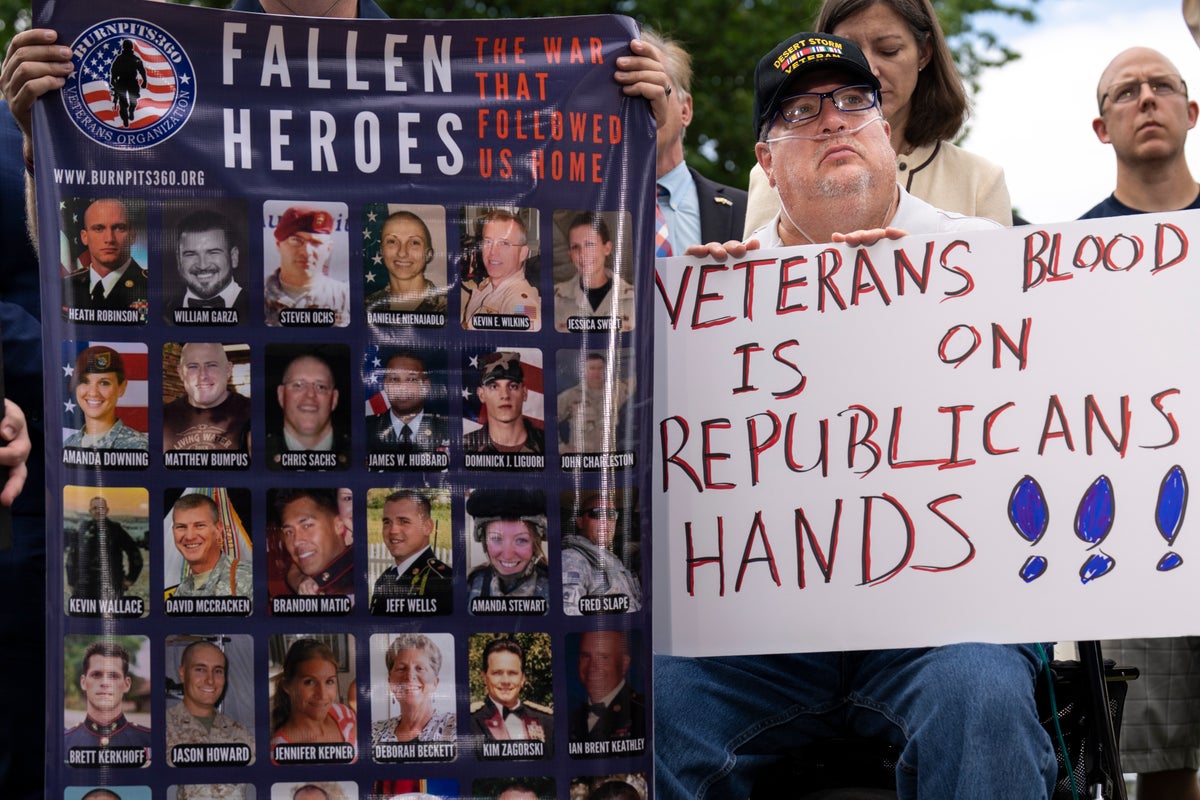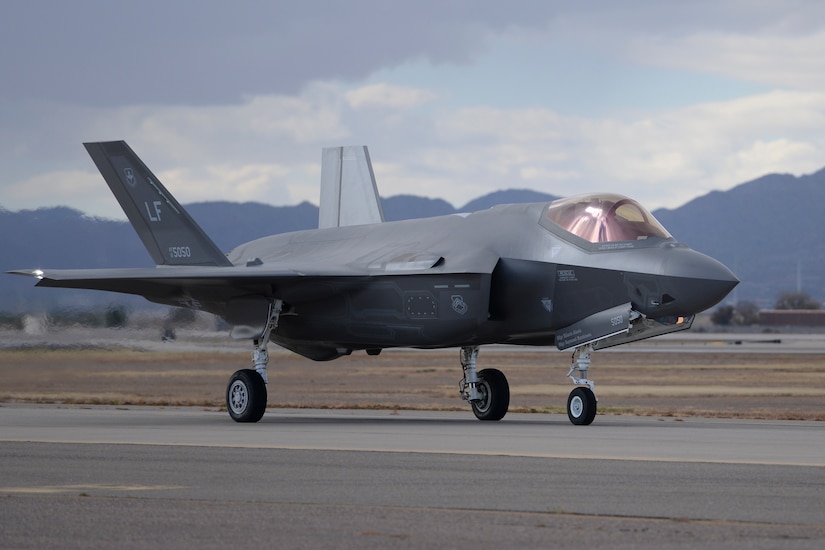[ad_1]

Last night, veterans, family members and advocates camped out on the steps of the US Capitol.
They had been there since Thursday morning – just hours after a group of Republican lawmakers derailed a bill providing healthcare access to veterans suffering from toxic exposure to burn pits.
And they’re not going to go away.
“If the veterans during war don’t get to go home on recess or go on vacation then neither should those 25 senators,” Rosie Torres told The Independent on Friday morning from her position at the Capitol.
“We’re not going to leave until we get a yes from all those senators on Monday. We are not going anywhere until it’s done.
“We’ve been here since 8am yesterday and we were here throughout the night. No one left. No one went to take a shower. No one slept.
“Throughout the night we had members of Congress and just everyday Americans who care stopping by. We had veterans standing watch here with us, people bringing us food: Jon [Stewart] sent pizza. Senator Gillibrand brought us pizza.
“It rained… It was a sort of nice moment for veterans as there was that camaraderie together.”
While many lawmakers and Americans came and went, around 25 members of the veteran community didn’t budge from their spot all night – ironically the same number of GOP senators who “blindsided” them during Wednesday’s vote on the SFC Heath Robinson Honoring Our PACT Act.
It’s not how Ms Torres – cofounder of Burn Pits 360 and the wife of veteran Le Roy Torres – expected to be spending this trip to Washington DC.
For more than a decade, she has travelled back and forth to the capital lobbying the US government to take the issue of burn pits seriously.
The fight was supposed to now be over.
She had gone to the capital along with other veteran community members to see what they all hoped would be the bill’s final passage before it would land on President Joe Biden’s desk.
Ms Torres was looking forward to going to the White House to see the bill that she and so many others had fought so long for to be finally signed into law.
After all, it appeared to be a done deal.
Rosie Torres (centre) with members of the veteran community and lawmakers during Thursday night’s sit in at the Capitol
(Burn Pits 360)
Back on 16 June, the Senate had voted 84 to 14 in favour of the bill – a landslide vote especially in what is an evenly divided Senate.
Due to some changes, the bill had to be sent back to the House for a final vote where it passed with a 342-88 vote on 14 July.
Landing back in the Senate with a minor technical fix, another vote was called – a vote that many believed to be largely procedural given the overwhelming support just one month earlier.
On Wednesday, the US senators cast their votes on the motion to invoke cloture on the bill, paving the way for a final vote on its passage.
The bill tanked, with a 55-42 vote – five short of the needed 60 votes needed to pass.
Only eight Republican senators voted to move it forward, with 25 who voted in favour of it just one month earlier reversing their support in the 11th hour after Senator Pat Toomey branded the bill a “slush fund”.
In an added insult, Republicans were even seen celebrating the blow to the veteran community on the Senate floor.
Footage from the roll call vote captured a group of GOP senators shaking hands on the chamber floor.
Texas Senator Ted Cruz – who famously abandoned his state to holiday in Cancun in the midst of a deadly winter storm – and Montana Senator Steve Haines even gave each other a celebratory fist-bump as Mr Haines “no” vote was read out.
John Feal, a veterans advocate and a 9/11 first responder, branded their actions “repulsive”.
Jon Stewart blasted GOP lawmakers after they blocked the burn pits bill
(EPA)
“It’s repulsive and repugnant – Ted Cruz and Steve Daines are two of the biggest colossal douchebags in Washington DC,” he told The Independent on Friday.
Jon Stewart, TV host and veterans advocate, also slammed them as “despicable” for “celebrating their victory over veterans with cancer”.
“Way to go, guys! You finally handed it to ‘big veteran with cancer.’ Well done,” he mocked them.
To Ms Torres, the moment the bill tanked was “a gut punch”.
Her husband is one of a staggering 3.4 million US servicemembers and veterans estimated to have been exposed to burn pits and airborne toxins while serving their country overseas.
Le Roy was deployed to Iraq in 2007 as a member of the Army reserve.
He began suffering respiratory issues while on deployment and was hospitalised within a matter of weeks of returning home to the US at the end of his tour.
After being medically discharged from the Army, he was diagnosed with constrictive bronchiolitis – a rare terminal condition caused by toxic exposure.
For years, the VA denied Le Roy’s condition was connected to his service to his country and denied him healthcare and claims for service-connected illness.
His story echoes that of thousands of veterans across the US who returned home from war with terminal illnesses from burn pits and then found themselves denied healthcare and benefits from the country that sent them there.
Between 2007 and 2020, the VA turned down a staggering 80 per cent of all disability claims mentioning burn pits.
Finally, the PACT Act would give veterans like Le Roy access to the healthcare and disability benefits that they need. The bipartisan bill presumptively links 23 cancers, respiratory illnesses and other conditions to a veterans’ exposure to burn pits while on deployment overseas.
After he voted against the bill on Wednesday, Mr Toomey insisted that he does support it but wants to add an amendment on provisional spending to address what he describes as a “budget gimmick” that he claims could lead to $400bn spending unrelated to veterans.
His comments have been slammed by Democrats, veterans and supporters who responded in full force with a highly emotional press conference on Thursday where Senator Kristen Gillibrand said that Republicans “just sentenced veterans to death” and Mr Stewart called the group of lawmakers “cowards”.
The bill’s derailing has especially sparked a fierce battle between Mr Toomey and Mr Stewart.
The popular TV host has slammed the GOP lawmaker on social media and gone on a media blitz to rail against his actions.
“No spending that is not related to veterans has been added to this bill, no last-minute budget gimmicks have been added to this bill, it is purely based on toxic exposure and healthcare to veterans,” he said on Fox News on Friday.
Mr Toomey’s office responded by accusing Mr Stewart of “launching false accusations and ad hominin attacks” against him when he is trying to “stop the PACT Act from being used as a vehicle for a $400bn spending binge totally unrelated to veterans”.
As far as Mr Feal is concerned, Mr Toomey’s comments about the bill are all “lies”.
“Anything that comes out of his mouth right now is a lie and is disingenuous,” he told The Independent.
“It’s the furthest thing from the truth. And the fact that he’s retiring at the end of the year and is doing this is proof that he is a piece of s***. Usually when members of Congress retire they do the morally right thing… this man was put up to do this and was probably offered something out of it.
Le Roy Torres was diagnosed with constrictive bronchiolitis and toxic brain injury from his exposure to burn pits overseas
(Burn Pits 360)
“Telling everyone this is a slush fund is a lie. Telling everyone he wasn’t offered a vote [on his amendment] is a lie. He’s unAmerican.”
Mr Feal added that it hasn’t been lost on the veteran community that several of the other 25 GOP lawmakers who changed their minds at the last minute are in fact veterans themselves.
“That’s like your buddy getting shot on the battlefield and just leaving them to die,” he said.
Though “disgusted”, Mr Feal isn’t exactly surprised by the week’s events.
As a 9/11 survivor who first lobbied the US government to pass the law that now gives first responders healthcare for illnesses and injuries sustained at Ground Zero, he’s seen it before.
“This is eerily similar to what we experienced with the 9/11 bill,” he said.
“[This week], we were caught off guard and thought we had a victory but we were bamboozled.
“But I’ve seen this before and we’re not reacting, we’re responding… we’re going to keep up the pressure until Monday when another vote is called.”
Senate Majority Leader Chuck Schumer has said that he will “give our Republican friends” another chance to pass the bill on Monday, as the clock is ticking to get it passed before the summer recess.
On 5 August, senators head off for a month-long break.
Mr Feal is confident that “it’s going to get passed” as he warns “I am not afraid to square up to a senator” when lives are on the line.
“They have Ted Cruz and Steve Daines fist bumping. We have Jon Stewart telling Americans that they stabbed veterans in the back. And we have John Feal, his sidekick, saying f*** you,” he said.
“We’re talking about human life – people are dying and when you can’t put aside your political party and think like a human being then you don’t deserve to be in office.”
But the veteran community says that even a week delay is too long for the veterans who are in need of life-saving healthcare and access to disability benefits now.
A US service member throws something into a burn pit in Iraq
(U.S. Air Force photo/Senior Airman Julianne Showalter)
“People will die waiting for this. Someone will die this weekend,” said Mr Feal.
Mr Toomey and the other GOP lawmakers holding up the bill have “veterans’ blood on their hands”, agreed Ms Torres.
“These veterans’ blood is on their hands. Every day that he wastes and plays partisan politics, someone else dies,” she said.
“Time is of the essence. People don’t have time. Captain [Rafael] Barbosa’s wife is here – he has stage four colon cancer.
“A woman stopped by to bring us cookies yesterday who has stage four cancer related to toxic exposure. She is an Iraq War veteran and she stopped by with her husband in tears to share her story.”
Another veteran suffering from burn pits killed himself while the bill’s passage has rumbled on, she said.
Ms Torres had a strong message for Mr Toomey: “Time is of the essence – stop the delay. Your tactics are killing veterans.”
Between now and Monday’s vote, she and other members of the veteran community will continue to stage their sit-in outside the naiton’s Capitol.
Mr Stewart, Mr Feal and other advocates will drum up attention in the media.
And veteran groups will hold rallies to amplify the message and urge Americans to lobby lawmakers to act.
As Ms Torres said: “We’re letting Americans know you elected these people and this is what they’re doing to veterans.”
[ad_2]
Source link


:quality(70)/cloudfront-us-east-1.images.arcpublishing.com/mco/VSCIMAKON5ALNGEABP3EDWQSSA.jpg)
:quality(70)/cloudfront-us-east-1.images.arcpublishing.com/mco/W5HNOIVAXBHQTPJ2ZGLADOIFE4.jpg)
:quality(70)/cloudfront-us-east-1.images.arcpublishing.com/mco/XFBFMVEPRRDMNPOWYUUP3UNMFE.jpg)













:quality(70)/cloudfront-us-east-1.images.arcpublishing.com/mco/ZC7CE7UA2NEMJKF5OUHUJD3SNM.jpg)
:quality(70)/cloudfront-us-east-1.images.arcpublishing.com/mco/VJYHM636JRAFPEH2JYI6VKRE4I.jpg)
:quality(70)/cloudfront-us-east-1.images.arcpublishing.com/mco/BVKUKQA6N5EBJGEGORXZR2GTAQ.jpg)


